Abstract
1 Unilateral intrahypothalamic injection of 5-hydroxytryptamine (5-HT) caused a dose-related fall in core temperature in rats, whereas injection of tryptamine into the same site caused a dose-related rise in core temperature. 2 The core temperature changes induced by 5-HT or tryptamine were inhibited by intrahypothalamic pretreatment with indoleamine receptor antagonists in a dose-related manner. 3 Other neurotransmitter antagonists, haloperidol, atropine, phentolamine and (-)-propranolol, had no significant effect on core temperature changes induced by 5-HT or tryptamine. 4 A differential antagonism was observed for the indoleamine receptor antagonists against 5-HT and tryptamine-induced core temperature changes. Methergoline and triflupromazine were more selective against tryptamine-induced hyperthermia, while cyproheptadine was more selective against 5-HT-induced hypothermia. 5 Intrahypothalamic pretreatment with 5,-7-dihydroxytryptamine (5,7-DHT) 42 nmol in 2 microliter inhibited tryptamine-induced hyperthermia, but was without effect on 5-HT-induced hypothermia. 6 These results suggest the possible existence of two different receptor populations within the preoptic anterior hypothalamus in rats; one specific for 5-HT and the other for tryptamine.
Full text
PDF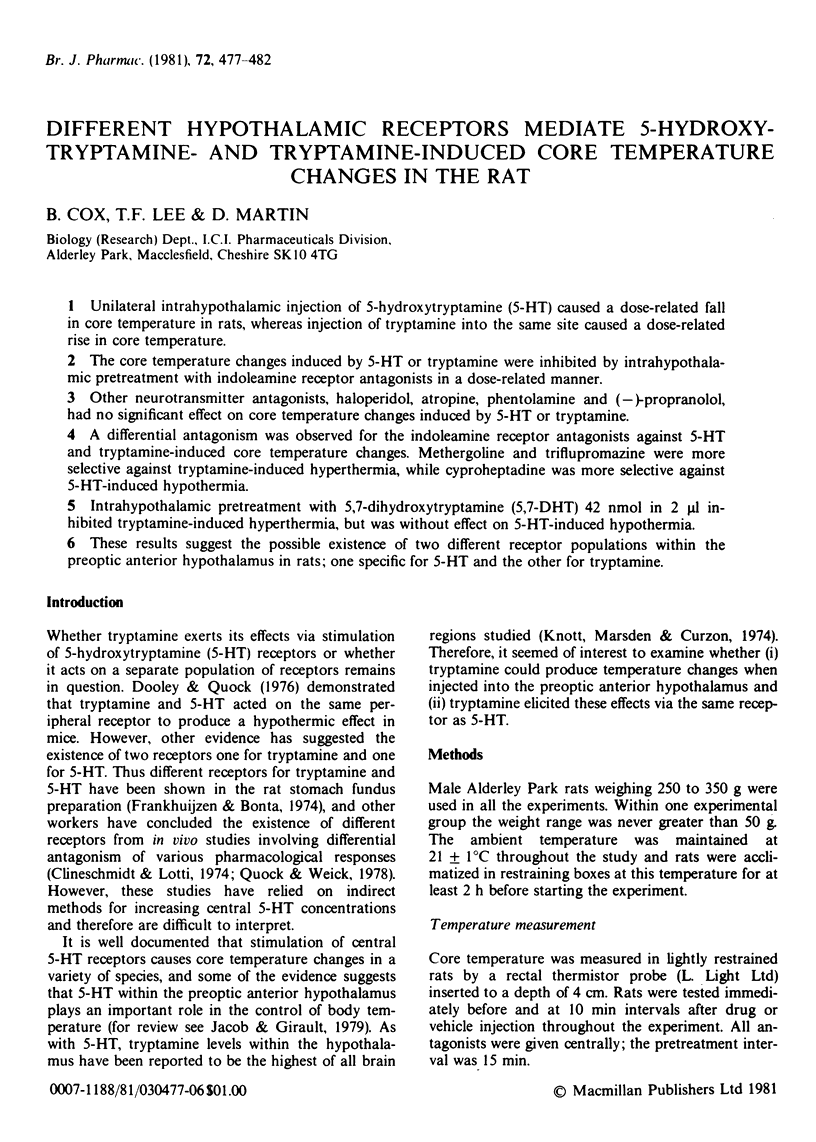
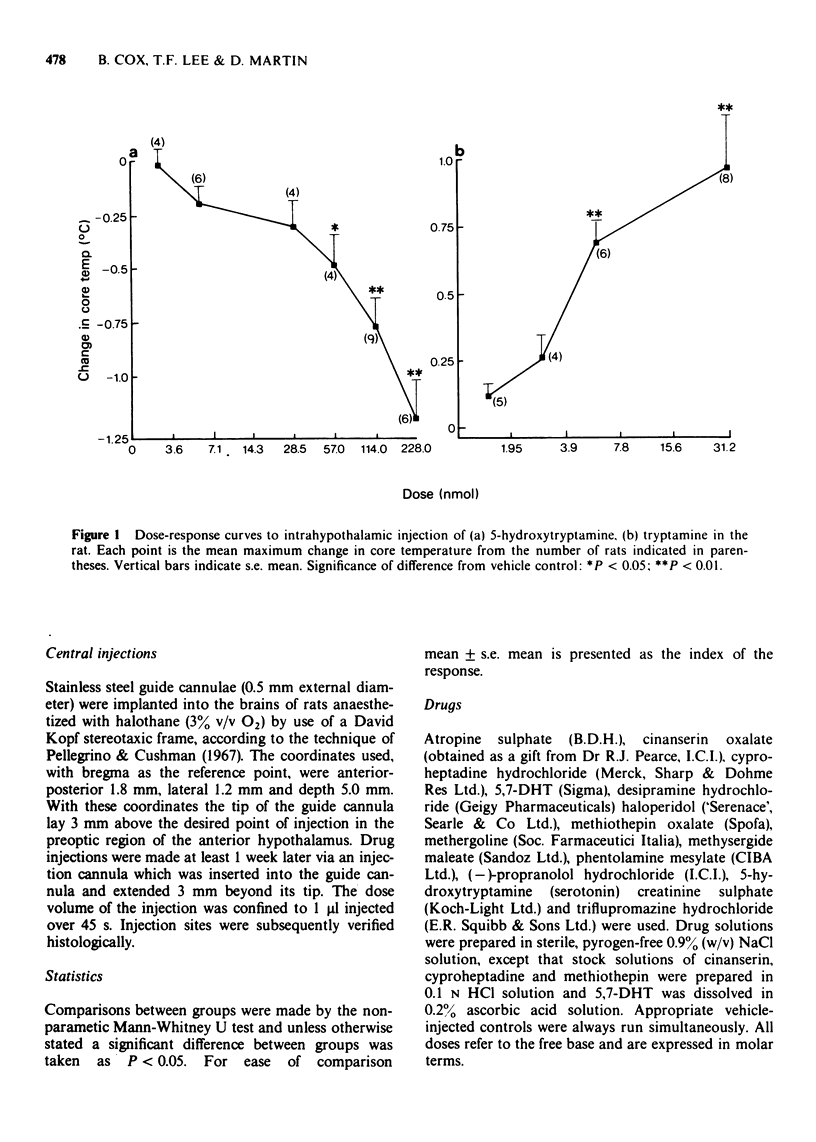
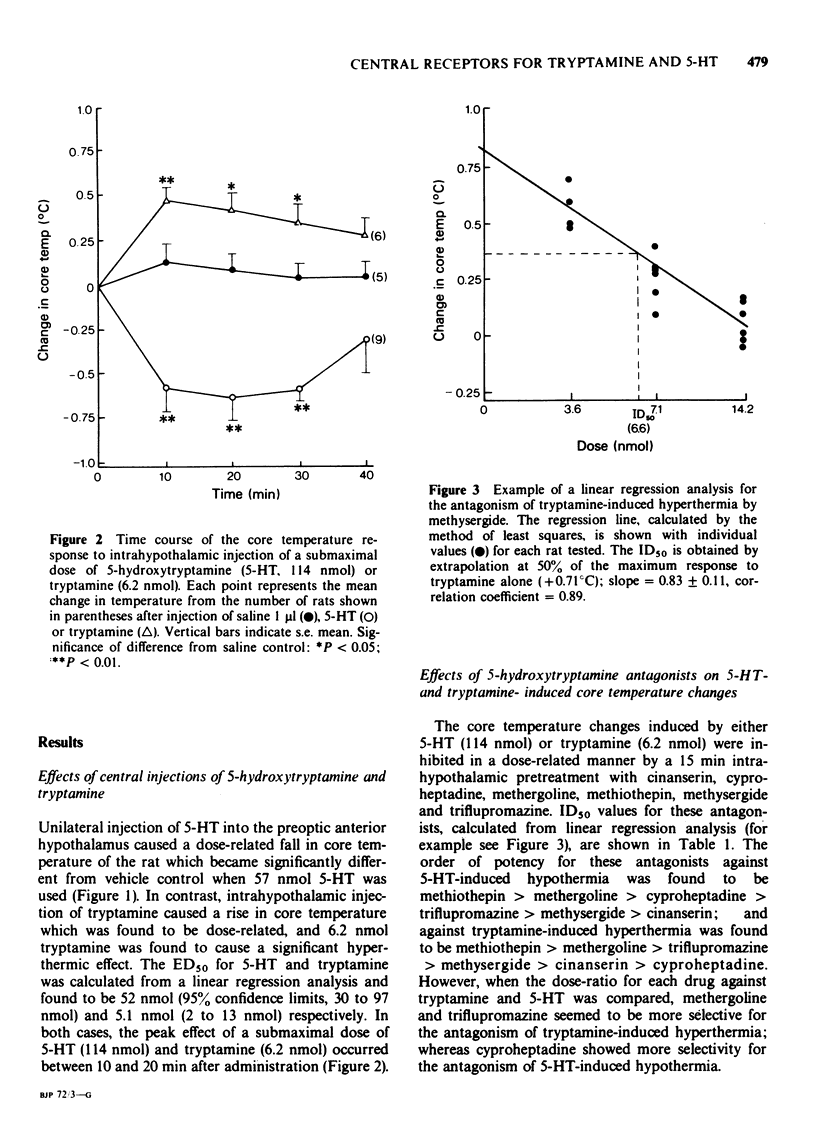
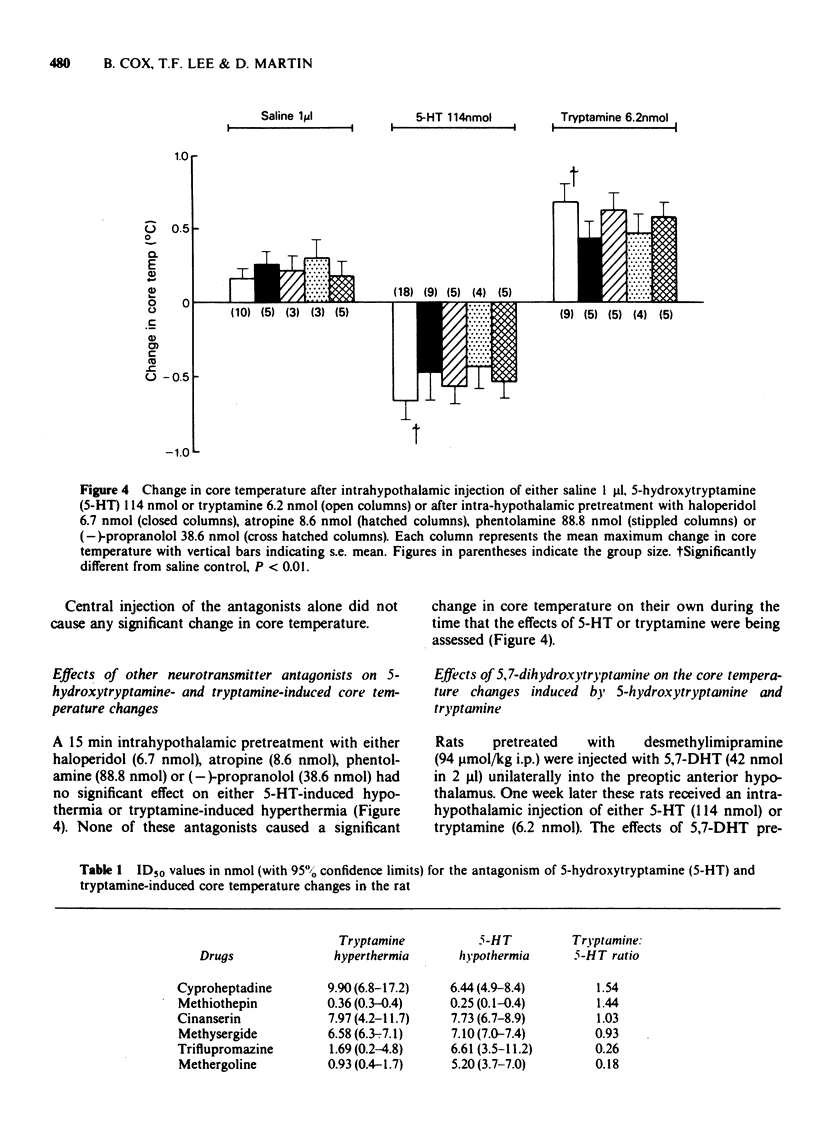
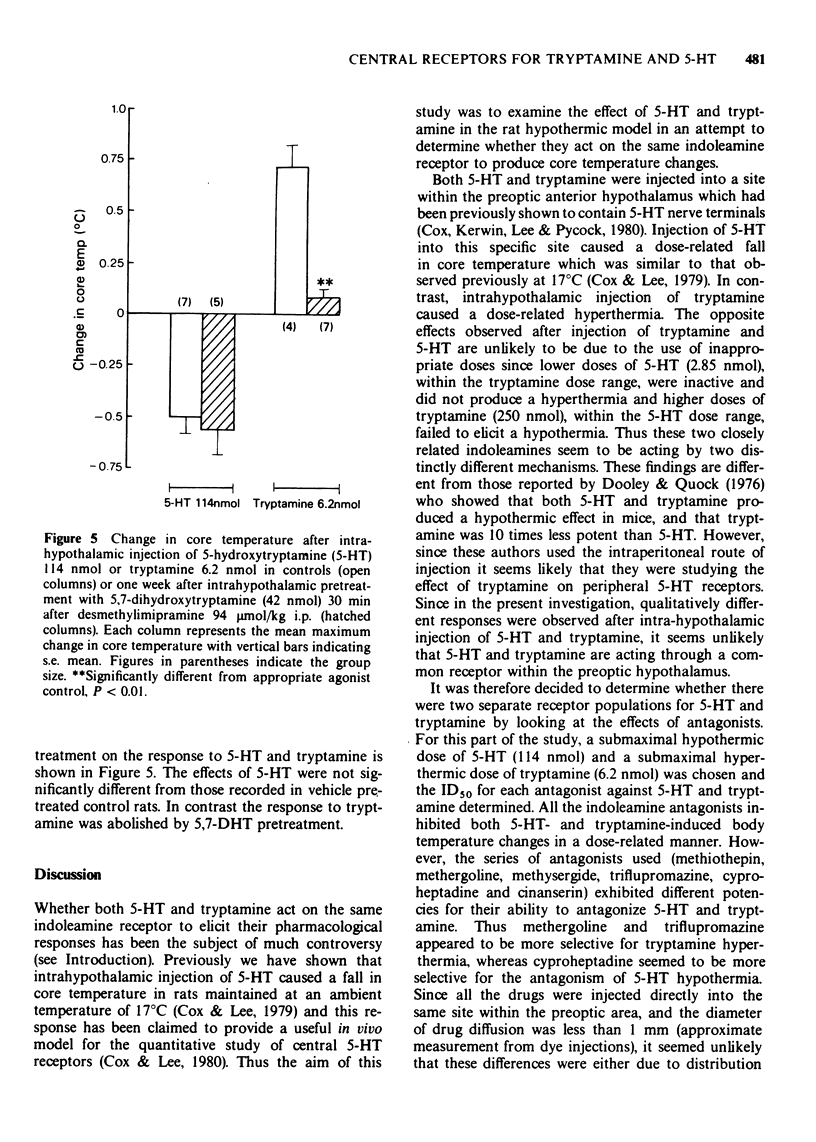
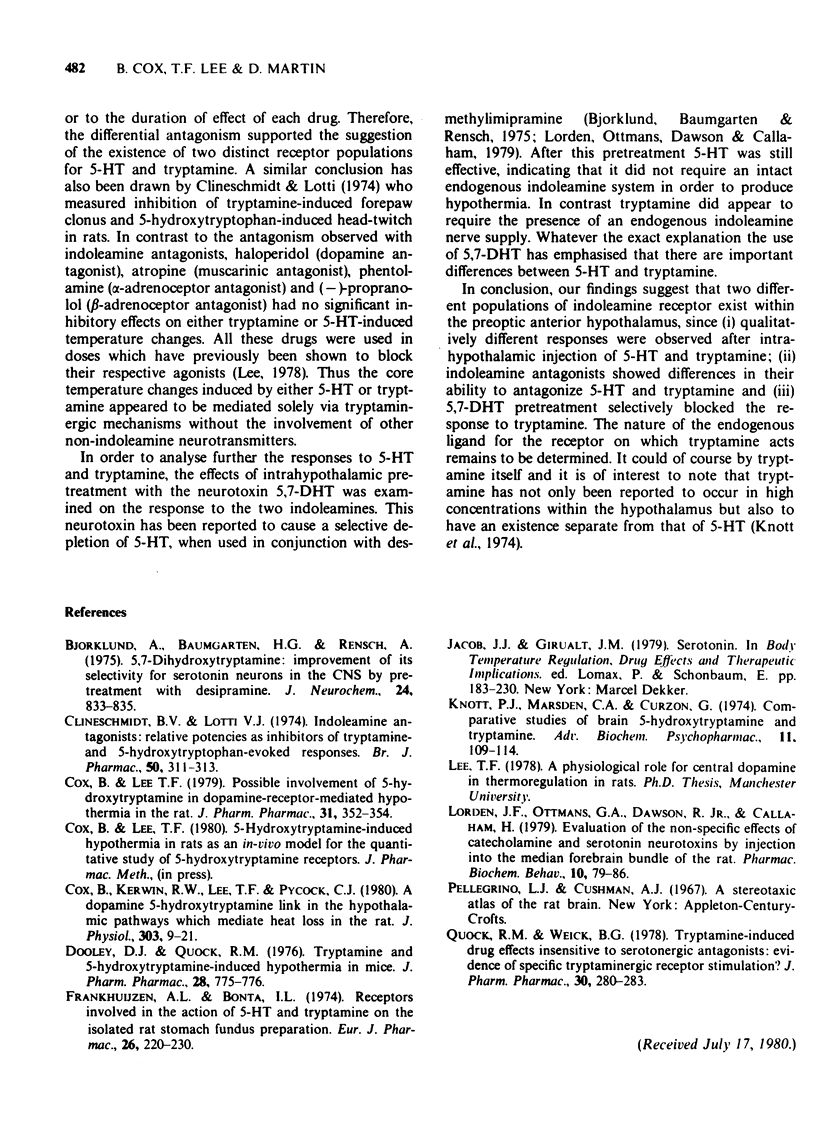
Selected References
These references are in PubMed. This may not be the complete list of references from this article.
- Björklund A., Baumgarten H. G., Rensch A. 5,7-Dihydroxytryptamine: improvement of its selectivity for serotonin neurons in the CNS by pretreatment with desipramine. J Neurochem. 1975 Apr;24(4):833–835. [PubMed] [Google Scholar]
- Clineschmidt B. V., Lotti V. J. Indoleamine antagonists: relative potencies as inhibitors of tryptamine- and 5-hydroxytryptophan-evoked responses. Br J Pharmacol. 1974 Feb;50(2):311–313. doi: 10.1111/j.1476-5381.1974.tb08577.x. [DOI] [PMC free article] [PubMed] [Google Scholar]
- Cox B., Kerwin R. W., Lee T. F., Pycock C. J. A dopamine-5-hydroxytryptamine link in the hypothalamic pathways which mediate heat loss in the rat. J Physiol. 1980 Jun;303:9–21. doi: 10.1113/jphysiol.1980.sp013266. [DOI] [PMC free article] [PubMed] [Google Scholar]
- Cox B., Lee T. F. Possible involvement of 5-hydroxytryptamine in dopamine-receptor-mediated hypothermia in the rat. J Pharm Pharmacol. 1979 May;31(5):352–354. doi: 10.1111/j.2042-7158.1979.tb13521.x. [DOI] [PubMed] [Google Scholar]
- Dooley D. J., Quock R. M. Tryptamine and 5-hydroxytryptamine-induced hypothermia in mice. J Pharm Pharmacol. 1976 Oct;28(10):775–776. doi: 10.1111/j.2042-7158.1976.tb04048.x. [DOI] [PubMed] [Google Scholar]
- Frankhuijzen A. L., Bonta I. L. Receptors involved in the action of 5-HT and tryptamine on the isolated rat stomach fundus preparation. Eur J Pharmacol. 1974 May;26(2):220–230. doi: 10.1016/0014-2999(74)90231-3. [DOI] [PubMed] [Google Scholar]
- Knott P. J., Marsden C. A., Curzon G. Comparative studies of brain 5-hydroxytryptamine and tryptamine. Adv Biochem Psychopharmacol. 1974;11(0):109–114. [PubMed] [Google Scholar]
- Lorden J. F., Oltmans G. A., Dawson R., Jr, Callahan M. Evaluation of the non-specific effects of catecholamine and serotonin neurotoxins by injection into the medial forebrain bundle of the rat. Pharmacol Biochem Behav. 1979 Jan;10(1):79–86. doi: 10.1016/0091-3057(79)90172-2. [DOI] [PubMed] [Google Scholar]
- Quock R. M., Weick B. G. Tryptamine-induced drug effects insensitive to serotoninergic antagonists: evidence of specific tryptaminergic receptor stimulation? J Pharm Pharmacol. 1978 May;30(5):280–283. doi: 10.1111/j.2042-7158.1978.tb13229.x. [DOI] [PubMed] [Google Scholar]


